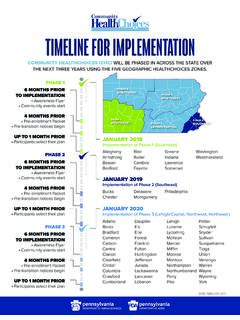Transcription of JUNIOR GEAR ADJUSTMENTS 010807 - LAMBRA
1 Page1of4 JUNIOR GEARS:By Scott Merry, Summit Velo, Tucson, Arizona, and edited by USA CyclingThis is a fairly comprehensive overview of gear restrictions for juniors inroad and trackevents. This review is generally intended for racers or parents of racers, but should provide auseful review for officials 1J6, juniors participating in road (road races, criteriums and time trials) arelimited to a chaingear ratio of meters (26 0 ). This means that with the chain in thebikes tallest gears (biggest front ring and smallest possible rear cog), the bike cannot travelmore than ft with a single turn of the cranks. To verify compliance, the bicycle is putinto the largest gearing, the (generally) left crank set pointing straight down at the beginningline, and then rolled backwards in a straight line.
2 Traveling backwards will turn the crank,when the crank makes a single complete revolution and again points directly down, it cannothave traveled past the end line, which is ft awayfrom the beginning line. This process iscalled the rollout maximum actual gearing depends on wheel and tire sizes. Most road bikes will beequipped with 700c wheels and 23c tires and for this, several combinations of front/rear gearsshouldwork. According to page 136 of the 2006 rulebook, the following gear combinationsand the expected rollout lengths are: 53/15 for an expected rollout of 24 6 ; 52/14 for an expected rollout of 25 9 ; 48/13 for an expected rollout of 25 7 and 45/12for an expected rollout of 26 0 .A 53/14 has an expected rollout of 26 3 , which is 3 too much. I have seensomejuniorsusing this gearing pass rollout the 3 inches isn t very much and is often missed.
3 However, itisn t supposed to work and I ve seen too many juniors disqualified (or given time penalties)for this seemingly small but distinct infraction. And although the rulebook specifically callsout the acceptable use of 45/12 and 52/14 combinations,itfurther states that performing arolloutremains theonlymethod for verifying compliance. Using smaller (20c) tires mayallow a 53/14 to work and the use of larger (25c) tires will likely prevent the use of 45/12gearing (note: intended more for the rollout official than the racer but if you are testing a45/12 setup, all the slack needs to be taken up before performing the rollout so that the crankstarts turning instantly when the wheel starts turning).So, how to comply?Replacement of the stock 53T front chain ring with either a 45T or a 52 Tchain ring will be necessary.
4 Depending on the choice for the front chain ring, replacement ofthe rear cassette or blocking out of some of the smaller rear gears may be necessary. For 9-speed Shimano, the 45T and 52T rings are fairly plentiful (lookon eBay or at bike swaps) andare reasonably priced. However, for 10-speed Dura-Ace, 52T chainrings having the stockDura-Ace look, they are at least $120!BLOCKING OUT GEARS:If your choice is to go with a 52T front chain ring, you willneed to block outcogs smaller than the 14T cog. As it is likely that your two smallest cogshave 12 and 13 teeth, respectively, this means you need to block out 2 gears. There areseveral ways to block out gears and with a little practice you should be able to do this in lessPage2of4than 2 minutes. To begin, make sure the drive train is clean, freshly oiled, and shiftingproperly.
5 Put the chain onto the appropriate rear cog (see above) so that your expected rolloutwill be met. Figure 1 shows a bike with a 52T front ring anda 12-25 rear cassette with thechain on the 14T rear cog. Also shown in this figure are 3 adjusting screws. The upper screwis called the B-screw and it generally does not require adjusting; leave this one for yourfavorite mechanic to play with. The lowest one adjusts the possible range of the derailleurwhen it is on the largest rear cogs. Again, stay away from this one as turning it the wrongway can lead to the spokes playing expensive games with the third screw is the high rangeadjuster. Turning it in (clockwise) will limit the range of thederailleur and hence, tend to prevent the chain from engaging smaller gears. Turning it out(CCW) allows more range and will therefore allow engagement of smaller gears.
6 To makethe adjustment , start screwing the high range adjuster in (CW) until you just feel it start totighten up. From this point, you ll probably want to turn it another turn. Now, downshift the gear lever so that it would normally allow engagement of the 13T cog and turn the it drops down to the 13T, you haven t turned it in far enough. Make your ADJUSTMENTS in turn increments until you just keep it in the 14T. Turn it too far and you ll notice that the chain either jumps into the 15T or tend to skip upwards towards it. If this happens, turn thescrew back out a limitation is the length of the range adjustment screw. The screw is usually long enoughto allow blocking out of 2 gears (as shown in Figure 1). However, I have found bikes wherethe limit screw isn t long enough to block out even 2 gears (particularly with Campy Record), you ll need to check your own bike here.
7 Moreover, if the smallest gear on the rear cassette is an 11T cog, the screw probably won t be long enough to block out 3gears. The same mightbe true if you re running a 53T front ring and you need to block out a 12-25 cassette to the15T cog I saw this with 2 bikes at the 2006 Swiss Criterium in Glendale, 1: adjustment screws on a Shimano rear derailleurPage3of4 Figure 2: Adjusting the high range adjuster screwHaving one or more gears blocked out will have one side effect. Although the derailleur willnot allow the chain to engage the blocked out gears, the shifter will still click to those gears. As this is done, the cable will appear to have extra slack in it. This is normal and the cableshould not be adjusted to remove the slack from the cable. For at least Shimano shifters, theamount of cable taken out by each shifting click is not the same for all gears and hence, if thecable is adjusted, the indexing of the derailleur will be wrong resulting in imprecise national championships events, blocking out rear gears is not meansthat it will be necessary to run either a 45/12 or a 52/14 (with a special 14-25 JUNIOR cassette).
8 Both methods work well but depending on which system you use, be careful of getting sparewheels after a flat during a race (for example, if you run a setup having a 52/14 combinationand get a replacement rear wheel with a 12T rear cassette on your bike, you won t make roll-out and will be disqualified).For most local races, rollout is done before the race. This is because at most venues, thejuniors race first and so, the officials have time to dothe rollout before the race. Followingthe race, the officials are busy getting the next event going. For larger events or for statechampionships, rollout is done after the race, even if there was an unofficial (prerace) , although rollout may be done before a race, it is the after-race rollout that of 2007, juniors must use their JUNIOR gears even if riding in elite( senior)races!
9 WHEEL COMPATIBILITY:For juniors having Shimano 10-speed setups and who arerunning FH/WH-7800 10-speed Dura-Ace freehubs, Dura-Ace 14-* JUNIOR cassettes are notyet available and Ultegra JUNIOR cassettes (13-25 through 16-27) will not fit onto the ll need to either use a 45T front ring with a 12-* Dura-Ace cassette or use a 52T frontring and get a spare wheel that will accept an Ultregra JUNIOR cassette. For the JUNIOR riderwho wants the flexibility to run larger gearing, the latter may be the best choice as you canchange out the rear wheel and be running an 11-tooth rear cassette ( , a 52/12 or 52/11)Page4of4without any other modifications. (note: Mavic makes a rear cogset that is compatible usethe Kit No. 4).USE OF A 45T FRONT CHAINRING AND A STOCK (12-*) CASSETTE:In theexpected rollout , notice that a 45T front chainringpaired with a 12T rear cog provides themaximum allowed rollout of 26 0 (with 23c tires).
10 For juniors, this is an ideal setup as mostbikes come standard with a 12-* rear cassette so the only expense is a 45T front (3/32 , 130mm BCD) chainrings are available on eBay for under $50., I VE OBSERVED: In carefully watching rollouts over the past couple of year, I ve noticed a couple of problems that can confuse racers and officials )The bike needs to betested in its tallest configuration. This means taking a quick lookat the rear cassette and verifying that the gearing is in order smallest on the outsideto largest on the inside. Then downshifting the derailleur mechanism and turning thecranks tomake sure that the chain is dropped down in the smallest possible rear )As long as you retaking a visual survey of the rear cassette, take a look at the numberof teeth on the front chainring it is generally stamped on it.






